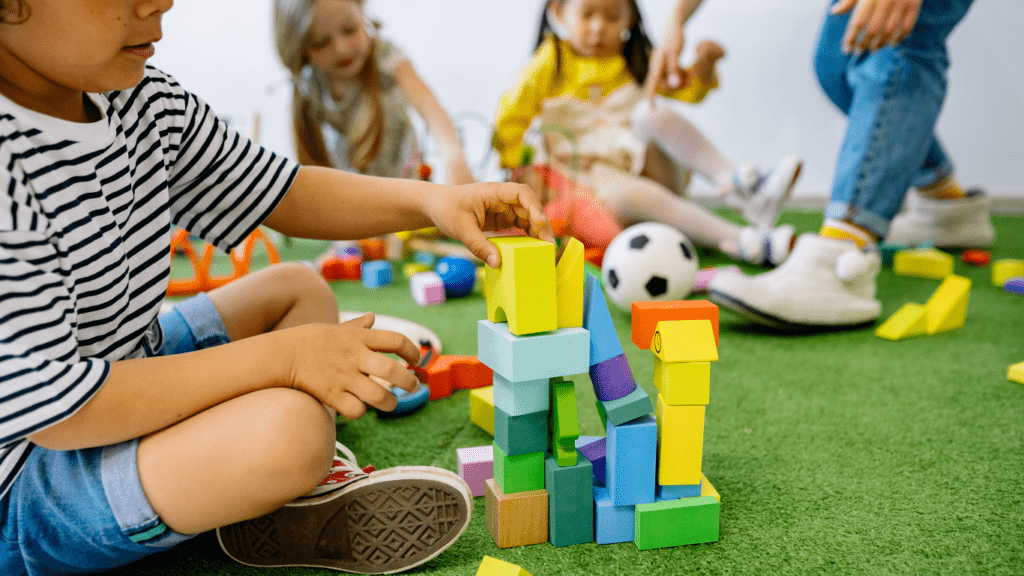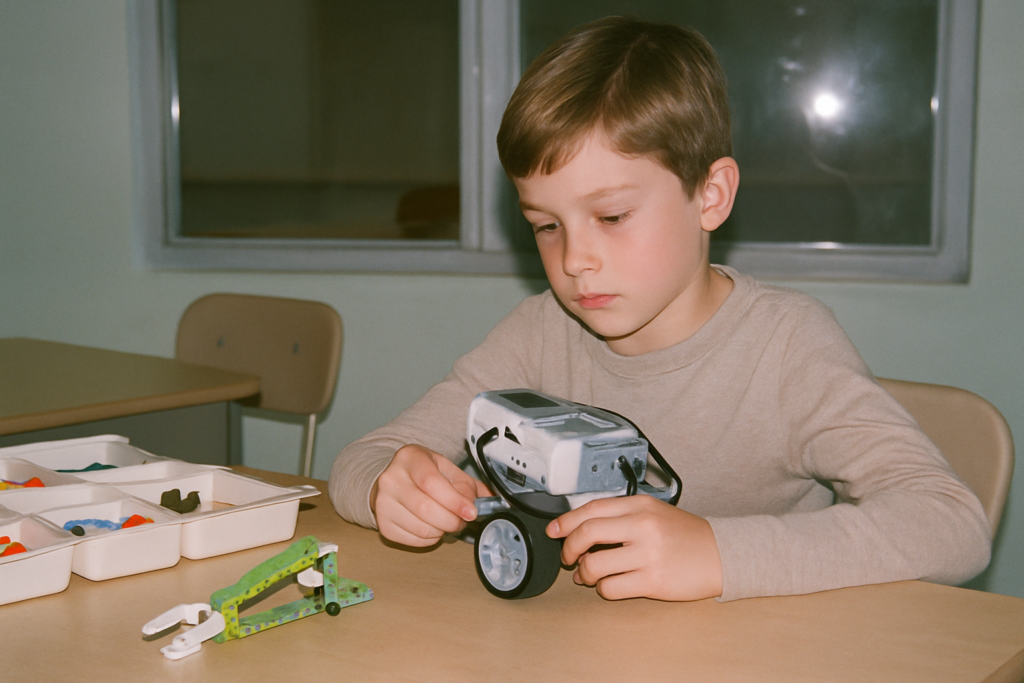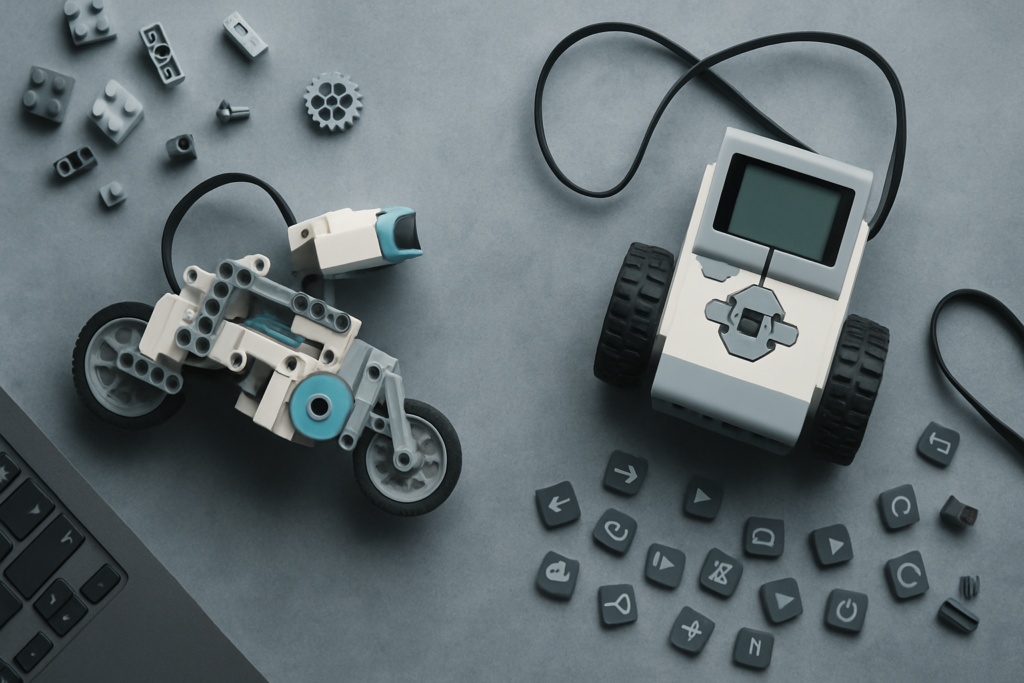Defining STEM Toys and Their Importance in Education
STEM toys transform traditional learning approaches into interactive experiences. By integrating science, technology, engineering, and math, these toys make education engaging and fun.
What Are STEM Toys?
STEM toys integrate educational principles into play. They aim to teach kids critical thinking, problem-solving, and reasoning skills. For example, building blocks like LEGO kits enhance engineering concepts by encouraging children to construct structures.
Another example is chemistry sets, which allow kids to conduct experiments. These toys usually target different age groups, ensuring age-appropriate complexity.
Why Use STEM Toys for Coding?
STEM toys designed for coding introduce programming basics in a playful manner. These toys simplify coding concepts, making them accessible to young minds.
For instance, robot-building kits often come with programmable components. Kids can write simple codes to direct these robots, learning logic and sequencing steps.
Moreover, coding games transform abstract concepts into interactive challenges, compelling kids to think like programmers.
This approach cultivates early interest in computer science and technology, preparing them for future academic and career opportunities.
Key Features of Effective STEM Coding Toys
Effective STEM coding toys offer engaging ways to introduce programming concepts to children.
Interactive Learning Components
Interactive learning components enhance the educational value of STEM coding toys. They encourage hands-on activities, which improve engagement and retention.
For instance, robot-building kits let kids assemble and program robots, combining mechanical skills with coding knowledge.
Code-a-pillar and Sphero SPRK+ are examples of toys that use interactive elements to teach sequencing and problem-solving. These elements provide immediate feedback, helping children understand coding principles through trial and error.
Age Appropriateness and Scalability
Age-appropriate design ensures that STEM toys match the cognitive abilities of target age groups.
Toys like Cubetto are perfect for preschoolers who learn through tactile interaction, while older kids might enjoy more complex kits like LEGO Mindstorms.
Scalability allows these toys to grow with the child, offering new challenges as skills develop. Products that include beginner to advanced levels, such as Scratch and micro:bit, ensure continued educational value.
This adaptability makes the toys investment-worthy and keeps children engaged over the long term.
Popular STEM Toys That Make Coding Fun

STEM toys bridge education and play to teach coding skills. Popular options include robotics kits and programmable building blocks.
Robotics Kits
Robotics kits engage kids in hands-on coding by letting them build and program robots. These kits often come with sensors, motors, and pre-written codes to facilitate learning.
- LEGO Mindstorms: Older kids can build advanced robots, program them using a visual coding interface, and solve complex tasks.
- Botley the Coding Robot: Botley offers screen-free coding, teaching logic and programming basics with a remote programmer.
- ROBOLOCO: Offers various robots with different complexity levels, providing scalability and long-term educational engagement.
Programmable Building Blocks
Programmable building blocks combine construction with coding to enhance creativity. Kids can build various structures and animate them through programming.
- Cubetto: Designed for preschoolers, it uses a tangible interface to introduce coding basics without screens.
- LittleBits: Offers a modular approach to learning electronics and coding, suitable for various age groups.
- Kano: Includes kits to build computers and learn coding through fun, interactive challenges.
These STEM toys ensure continued educational value by adapting to different skill levels and keeping children engaged in learning coding essentials.
Benefits of Introducing Coding Through Play
Introducing coding through play offers several advantages for young learners. STEM toys create an engaging environment, making coding an enjoyable experience.
Cognitive Skills Development
Children develop essential cognitive skills by engaging with STEM toys. These toys provide interactive challenges, helping kids improve their memory, attention span, and logical thinking.
For example, when playing with Code-a-pillar, children sequence commands, fostering pattern recognition and planning. Robotics kits like Botley teach sequencing, which enhances computational thinking.
Enhancing Problem-Solving Abilities
STEM toys improve children’s problem-solving abilities by presenting them with hands-on tasks. Kids learn to break down complex problems into smaller, manageable steps.
LEGO Mindstorms, for instance, allows children to experiment with different code configurations to achieve desired behaviors, encouraging iterative learning.
Programmable blocks like LittleBits require kids to troubleshoot, boosting their critical thinking and perseverance skills.
Choosing the Right Coding Toy for Your Child
Selecting the perfect coding toy can be a daunting task due to the plethora of options available. Consider the following factors to make an informed decision.
Factors to Consider
- Age Appropriateness: Evaluate the toy’s suitability for your child’s age to ensure it aligns with their cognitive abilities. Younger children can benefit from toys with simple interfaces, like Cubetto, while older kids can handle more complex sets like LEGO Mindstorms.
- Educational Value: Consider toys that not only entertain but also educate. Look for features that teach coding fundamentals and computational thinking skills. For example, toys like Code-a-pillar focus on sequencing, while Botley teaches basic programming concepts.
- Scalability: Invest in toys that grow with your child. Scalable toys offer different levels of complexity, providing long-term value. For instance, LittleBits allows children to start with basic circuits and progress to more advanced projects.
- Engagement Level: Choose toys that captivate your child’s interest. Engagement is crucial for sustained learning. Interactive toys like Dash & Dot engage kids through responsive and programmable robots, making learning fun.
- Safety and Durability: Ensure the toy is safe and durable. High-quality materials and robust construction are essential, especially for young children. Check for non-toxic materials and sturdy build quality in products like Osmo Genius Kit.
Recommended Products for Various Age Groups
Ages 3-5:
- Cubetto: Introduces basic coding with a screen-free approach using a wooden robot and a tactile programming board.
- Code-a-pillar: Enhances sequencing and planning skills through interactive segments that can be arranged to direct the caterpillar.
Ages 6-8:
- Botley the Coding Robot: Offers basic coding lessons without the need for a screen and includes activities that teach loops and conditionals.
- Osmo Genius Kit: Combines physical play with digital learning, teaching problem-solving, and coding through interactive games.
Ages 9-12:
- LEGO Mindstorms: Provides advanced coding challenges and robotics, suitable for older children ready to tackle more complex tasks.
- LittleBits: Encourages creativity and technical skills by using electronic building blocks to create various inventions.
Choosing the right toy involves understanding your child’s interests and matching them with the toy’s educational potential.

 is an experienced contributor at Play Briks Construction, where he specializes in exploring the educational potential of construction toys in early childhood development. His work emphasizes the importance of hands-on play in fostering creativity, problem-solving skills, and spatial awareness among children. Patrick is dedicated to providing parents and educators with practical insights and strategies for integrating construction play into learning environments. He also focuses on the latest trends and innovations in the toy industry, ensuring that his audience stays informed and engaged.
is an experienced contributor at Play Briks Construction, where he specializes in exploring the educational potential of construction toys in early childhood development. His work emphasizes the importance of hands-on play in fostering creativity, problem-solving skills, and spatial awareness among children. Patrick is dedicated to providing parents and educators with practical insights and strategies for integrating construction play into learning environments. He also focuses on the latest trends and innovations in the toy industry, ensuring that his audience stays informed and engaged.

